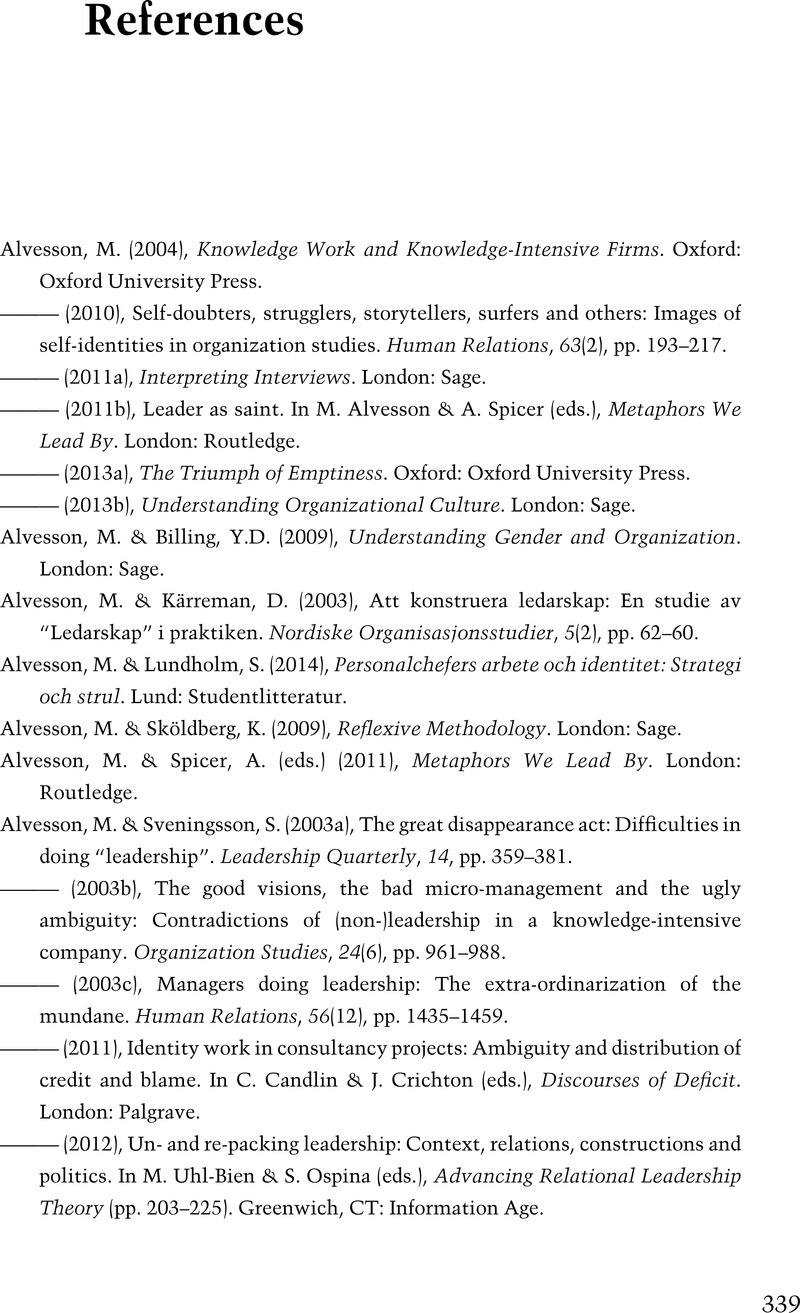Book contents
References
Published online by Cambridge University Press: 05 June 2016
Summary

- Type
- Chapter
- Information
- Managerial LivesLeadership and Identity in an Imperfect World, pp. 339 - 348Publisher: Cambridge University PressPrint publication year: 2016

